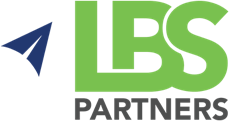LEAN & DIGITAL TRANSFORMATION: THE KEY TO SUCCESS IN AIRCRAFT LEASING?
The aircraft leasing industry is a complicated business that demands highly efficient asset management and financing. However, traditional methods are often bogged down by manual processes, data trapped in isolated silos across departments, and difficulties in maximising asset utilisation. These limitations create operational bottlenecks, and also hinder the ability to adapt to dynamic market conditions.
Fortunately, there is a practical solution: by applying Lean principles and cutting-edge technologies, aircraft leasing companies can streamline operations, gain real-time insights into their assets and market trends, and empower data-driven decision-making that can propel them ahead of the competition.
MANUAL PROCESSES AND SILOED DATA
The aircraft leasing industry’s reliance on manual processes is a major source of inefficiency and risk. From paper-based records to spreadsheets scattered across departments, these outdated methods lead to time-consuming tasks and increased errors.
Crucial data remains trapped in silos, hindering visibility into asset performance, market trends, and overall business health. This fragmentation makes it impossible to quickly access the insights needed for informed decision-making.
To address these challenges, aircraft leasing companies can leverage the power of digital transformation and Lean principles:
Data Centralization: A cloud-based asset management platform creates a single, reliable source of information accessible throughout the organisation. Lease agreements, maintenance records, aircraft specifications, and financial data are all consolidated. This enables seamless collaboration, eliminates data discrepancies, and empowers teams with a real-time, 360-degree view of assets.
Process Automation: Workflow automation streamlines repetitive tasks like lease calculations, maintenance scheduling, compliance reporting, and even invoice generation. This not only reduces tedious manual work and the potential for human error, but also frees up valuable time for strategic decision-making.
LIMITED VISIBILITY INTO ASSET HEALTH
In the aircraft leasing industry, maintaining optimal asset health is paramount. Traditional methods of asset monitoring often provide limited, outdated information. This lack of visibility creates a reactive maintenance approach, where issues are addressed only after they become critical. Unforeseen breakdowns, costly repairs, and extended downtime are common consequences, directly impacting operational efficiency and profitability.
To transform asset management, aircraft leasing companies can turn to innovative technologies aligned with Lean principles:
IoT Integration: Embedding Internet of Things (IoT) sensors into aircraft components allows for real-time monitoring of crucial metrics like engine performance, component wear, and overall system health. This continuous data stream provides a live picture of each aircraft’s condition, replacing guesswork with actionable insights. The maintenance teams can respond quickly, minimising disruption and preventing minor issues from escalating into major repairs.
Predictive Maintenance: Leveraging sophisticated analytics and machine learning models, lessors can move from reactive to proactive maintenance. Algorithms can analyse historical data, sensor readings, and maintenance logs to predict potential failures. This enables well-timed, targeted interventions that prevent costly breakdowns, maximise aircraft availability, and optimise maintenance spending.
SUBOPTIMAL REMARKETING AND TRANSITIONS
The remarketing and transition of aircraft at the end of a lease term are crucial phases in the aircraft leasing lifecycle. Traditional processes often lack the real-time data and market insights needed for optimal results. Without a clear understanding of market dynamics, asset value, and potential lessee interest, transitions become inefficient. This can lead to extended periods where aircraft sit idle, reducing their profitability and tying up valuable capital.
Digital transformation provides tools to optimise the remarketing and transition processes, enabling aircraft leasing companies to make faster, more strategic decisions:
Digital Marketplaces: Online platforms dedicated to aircraft leasing create a global marketplace, connecting lessors to a broader pool of potential buyers and lessees. This expanded reach can significantly reduce the time an aircraft spends between leases, accelerating transactions and maximising asset utilisation.
Data-Driven Decision Making: By integrating real-time market data, historical aircraft performance, and predictive analytics, leasing companies gain a comprehensive view of asset value and demand. These insights empower them to make informed decisions about remarketing strategies, lease terms, and pricing, maximising returns and minimising downtime.
* * *
Digital transformation is the key to unlocking the full potential of the aircraft leasing industry. By applying technologies that streamline operations, provide unmatched asset insights, and optimise remarketing strategies, companies gain a crucial competitive edge.
Those who adopt these innovations will future-proof their businesses, ensuring efficiency, profitability, and adaptability in an ever-changing market. The time for digital transformation in aircraft leasing is now.



